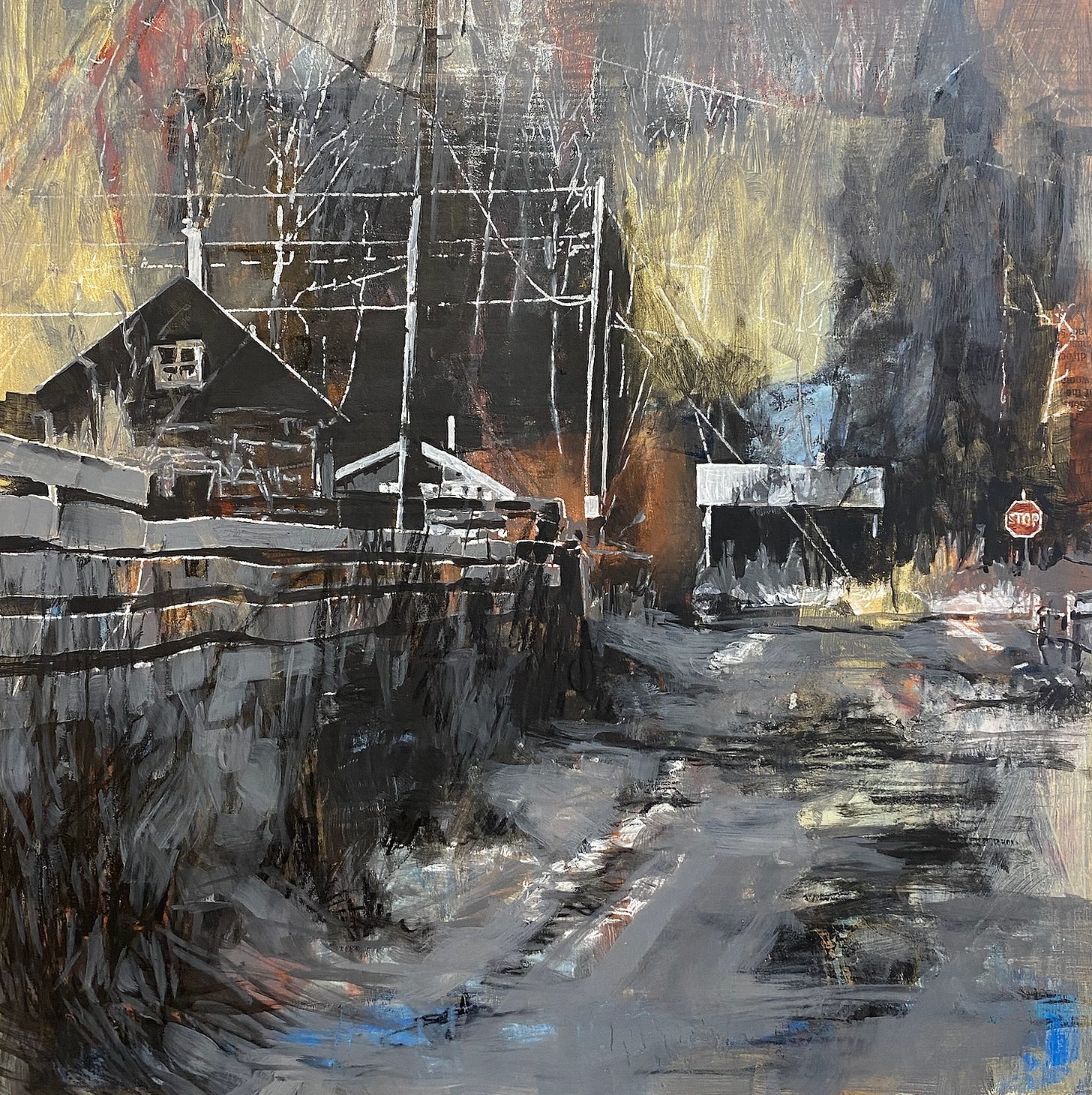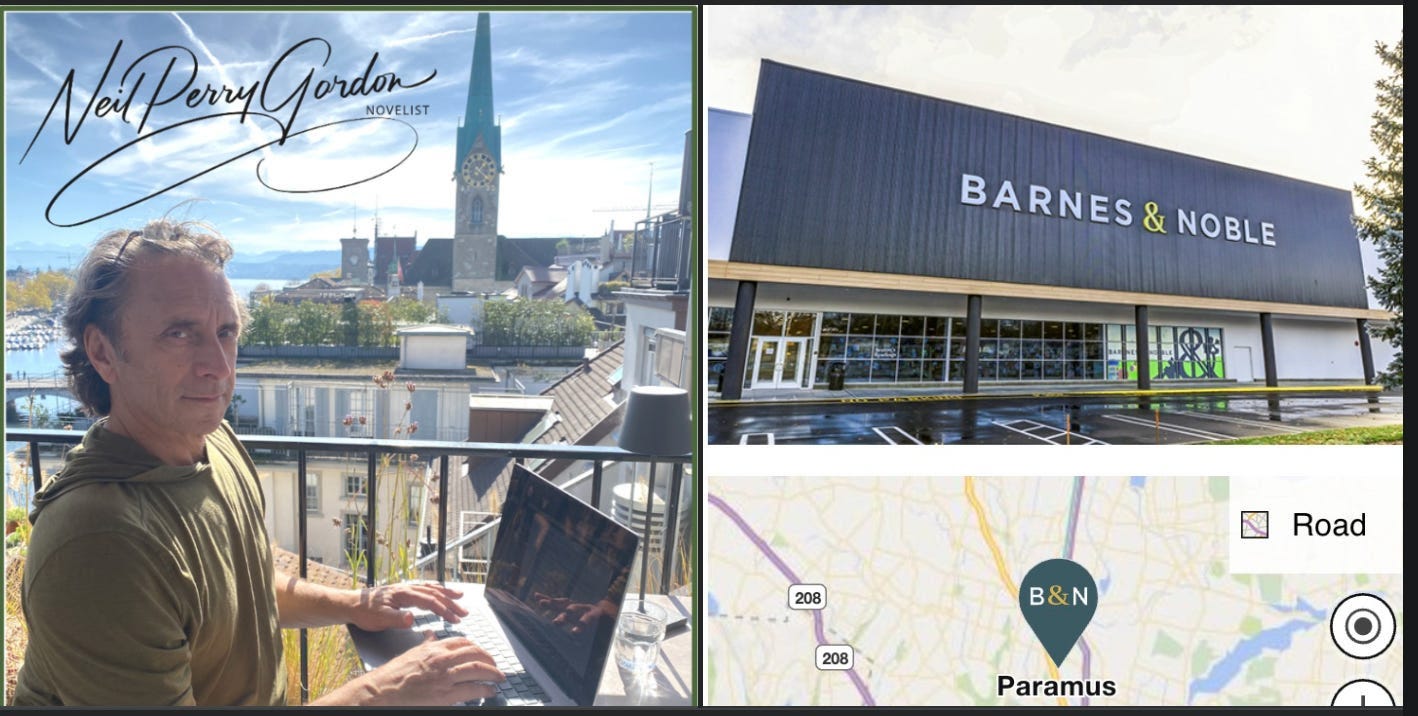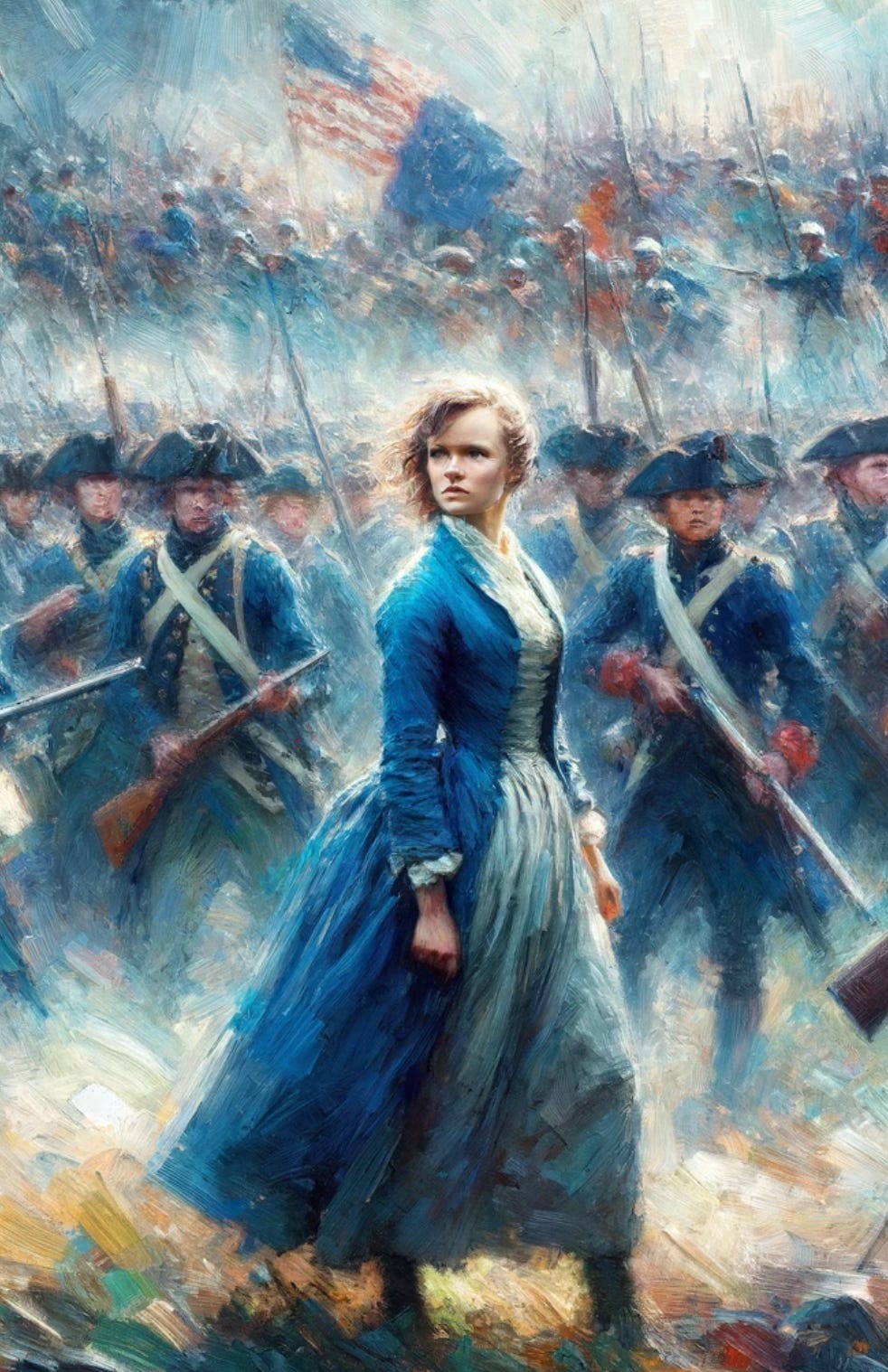The Story Behind the Art
The idea of weaving stories behind a work of art by Erica Miller came to me as naturally as the golden rays of the Alaskan summer sun. Erica, a talented artist whose vivid paintings breathe life into my trilogy, "The Alaskan Adventures of Percy Hope," has always captured the essence of our shared heritage with remarkable finesse. Her artwork, rich in historical and emotional depth, seemed the perfect canvas for a flash fiction piece or two that would delve into the hidden narratives behind her creations.
As I admired her "B Street" and “Second Street” paintings, I was drawn to the vibrant, chaotic energy they depicted. I imagined the bustling streets of Hope, Alaska, not just as they are today but as they were a century ago, filled with miners, adventurers, and dreamers.
Inspired by this vision, I decided to explore crafting two flash fiction stories of about 1,000 words each. The first story, "Percy Hope's Treasure Map," was born from the rustic charm of "B Street" and “Second Street," echoing the thrill of a treasure hunt in the Chugach Mountains. The second story, "The Icebox," drew from Erica's painting of the same name, depicting the poignant tale of her grandfather, Ross Miller, and his struggles and hopes during World War II in Seward, Alaska.
These stories were deeply inspired by the real history and enduring spirit of the people of Hope. They allowed me to pay homage to the town's legacy, much like Erica's paintings do. Together, our work creates a rich tapestry of narrative and visual art that celebrates the past while inspiring the future.
PERCY HOPE’S TREASURE MAP
DISCOVERING THE LEGACY OF HOPE'S HIDDEN RICHES
The sun hung high in the sky, casting long, warm rays across the quaint streets of Hope, Alaska. It was summertime, and the sunlight stretched into the wee hours of the next day’s morning, bathing the town in a perpetual golden glow. The vibrant community, once a bustling gold mining hub, now thrived with the energy of its close-knit residents. Yet, the echoes of its storied past lingered, murmuring through the wooden walls of its weather-beaten buildings and drifting along the sun-dappled, dusty roads.
One such memory was shared in the cozy corner of the local tavern. With his piercing blue eyes and unruly dark hair, Young Caleb Jensen gathered a small group of friends around a table. The tavern buzzed with the usual evening chatter, but Caleb’s voice held a secret that quieted the room.
“There’s something I’ve been holding onto,” he began, his voice low but filled with excitement. “A map handed down from Percy Hope himself. It says there’s a treasure buried up in the mountains.”
Gasps and murmurs filled the tavern. Percy Hope, the adventurous young man who ventured into the wilds of Alaska seeking fortune, had given the town its name. Caleb unrolled an old, weathered piece of parchment; the edges frayed, and the ink faded with time.
“This map was gifted to Percy at his wedding to Peggy at the Hope Social Hall in 1902,” Caleb explained. “He never pursued the treasure; instead, he handed it down with his estate to his son, Walter. It was lost over time, but I found it in the attic while searching for something else.”
Caleb’s friends leaned in, eyes wide with anticipation. Among them was Jake, Caleb’s closest confidant. “I bet there’s gold nuggets in that treasure,” Caleb said, his voice filled with excitement. “Can you imagine? Just sitting there, waiting for us to find it.”
Jake nodded, his eyes gleaming. “This could be our chance.”
With determined nods, they decided to search for the hidden treasure.
The following day, the group set off into the Chugach Mountains, the endless daylight guiding them. The journey was grueling, the path barely discernible through the dense growth. As they ventured deeper, the excitement of the hunt mingled with the gold rush history of Hope that seemed to follow their steps.
Days dragged on, the sun casting an ethereal light over their expedition. They camped under the twilight sky, the silence of the wilderness both a comfort and a challenge. On one particularly warm night, as the wind rustled through the trees, Caleb dreamed of Percy Hope. In his dream, Percy stood beside a weathered Hemlock, his hand resting gently on its trunk.
“Caleb,” Percy’s voice rumbled, intertwining with the howl of the wind, “the treasure you seek is not what you think it to be.”
The next morning, Caleb woke with a sense of unease. He shared his dream with Jake and the others, his voice trembling as he recounted Percy’s words. Despite the ominous message, they decided to press on, curiosity and the promise of adventure driving them forward.
Finally, they reached the location marked on the map. The site was hauntingly beautiful, a testament to the passage of time. Following a specific mark on the map indicating an old tree, they searched meticulously, their hopes high, but Caleb felt a growing sense of dread. As they dug, they unearthed an old metal box. When they opened it, they discovered something wrapped in oilcloth.
Caleb’s heart raced as he carefully unwrapped the cloth. Inside was a leather-bound book, pages filled with Percy Hope’s meticulous handwriting. They read through the entries and discovered that the journal was not just a record of Percy’s Alaskan adventures but a detailed account of the founding and development of Hope. It chronicled the struggles, triumphs, and deep sense of community that had defined the town from its earliest days.
One passage stood out:
“The real wealth of Hope is not found in the glitter of gold but in the indomitable spirit of its people, the bonds we forge, and the legacy we leave behind. To upset this delicate balance is to beckon disaster.”
The profound truth in Percy’s words struck Caleb and his friends. They realized that their quest had led them to something far more valuable than gold—a deeper understanding of their town’s heritage and the values that had sustained it through the years.
With the journal in hand, they returned to Hope, their hearts full of newfound appreciation. The town welcomed them with open arms, eager to hear their tale. The journal became a cherished artifact, shared with the community and future generations. It was displayed proudly under glass in the Hope Social Hall, where Percy had received the map many years ago.
Occasionally, the residents of Hope gathered to listen as Caleb read aloud from the journal, his voice carrying Percy’s legacy forward. The stories of hardship and resilience resonated deeply, reinforcing the community’s bonds. The townspeople felt a renewed connection to their past and a stronger sense of unity moving forward.
As time passed, Hope continued to thrive. New buildings rose alongside the old, a blend of history and progress. The town’s children learned about Percy Hope, Caleb Jensen, and the rich tapestry of stories that made up their heritage.
Hope stood as a testament to the enduring strength of its people. It was a place where memories lingered, and the future shone brightly. The legacy of Percy Hope and the adventurous souls who followed in his footsteps will forever be etched in the heart of this remarkable town. Every time someone walked down the quaint streets, they felt the presence of those who had come before, their spirits woven into the very fabric of Hope.
Erica Miller’s paintings of Second Street and B Street reflect these connections. The abstract chaos symbolizes the town’s vibrant life and enduring spirit. Hope’s timeless beauty and resilience are captured in every brushstroke as a reminder of the past and inspiration for the future.
THE ICEBOX
A LEGACY OF LOVE
Ross Miller felt the crunch of snow under his boots as he trudged through the nearly deserted streets of Seward, Alaska. It was 1942, and the once bustling town had transformed into a military outpost. His breath fogged in the frigid air, mingling with the wisps of steam rising from his morning coffee. He stopped to sip from his tin cup, feeling the warmth spread through his body, a temporary solace against the biting cold.
The decision to move his family to Seward had been driven by necessity. With the world embroiled in the chaos of war, Ross had taken a job at the naval base, ensuring the steady flow of supplies critical for the war effort. Initially, the move promised stability and security. However, the looming threat of Japanese attacks soon forced a painful separation. Due to the imminent danger, his wife, Alma, and their two children, Lewie and Erma, were evacuated to the Lower 48, leaving Ross to navigate this new and harsh reality alone.
Ross threw himself into his work as a maintenance man, finding solace in the routines and demands of his duties. The base was a hive of activity, with soldiers and workers bustling about, preparing for the worst while hoping for the best. His days were filled with unloading cargo ships, maintaining equipment, and ensuring every soldier had what they needed to defend this crucial outpost.
Evenings, however, were a different matter. The quiet of the Alaskan wilderness pressed in on him, amplifying his loneliness. The threat of Japanese attacks loomed large, and every shadow and every distant noise seemed to carry the menace of an unseen enemy. Ross wrote letters to his wife and the children, pouring his heart onto the pages. His words were a mix of mundane updates and heartfelt reassurances, a lifeline that connected him to the world he left behind.
“Dearest Alma,” he wrote one night, his hand trembling slightly from the cold, “I miss you and the children more than words can express. This place is not the same without your laughter, without the sound of Lewie’s curious questions or Erma’s infectious giggles. I keep busy, but the thought of you all returning keeps me going. Please stay safe and know I am doing my best to secure this place so we can be together again soon.”
The months dragged on, each day blurring into the next. The threat of attack never materialized, but the tension was a constant undercurrent. Ross found comfort in the camaraderie of his fellow workers and soldiers. They formed a tight-knit community, bound by their shared purpose and the hardships they endured together.
Ross’s nights were filled with vivid nightmares of bombings and invasions. He often woke in a cold sweat, the fear gripping his heart. He wondered if he would ever see his family again or if the war would tear them apart forever. The radio broadcasts, filled with news of battles won and lost, only added to his anxiety.
One crisp morning, as the first hints of spring began to tease the frozen landscape, a letter arrived from Alma. Ross tore it open with eager hands, his heart pounding in anticipation.
“Ross,” it began, “we received word that we may be able to return soon. The children are well, and we all miss you terribly. Lewie has been asking about the stars, and I told him how you would point them out to him in the Alaskan sky. Erma is growing so fast; you wouldn’t believe how much she’s changed. I can’t wait for us to be reunited and for you to see them again. Stay strong, my love. We will be home soon.”
Tears welled in Ross’s eyes as he read the letter, a mixture of relief and longing flooding his heart. The end of their separation was in sight, a beacon of hope in the endless winter.
As the weeks passed, the thawing ice and snow heralded the arrival of spring. The town of Seward began to stir with new life, with the promise of warmer days lifting everyone’s spirits. Finally, the day came when Ross stood at the dock, watching the ship that carried his family home approach. His heart raced as he scanned the deck, searching for the familiar faces he had missed dearly.
There they were. Alma, Lewie, and Erma waved and called out to him. Ross’s breath caught in his throat as he ran to meet them, his arms opening wide to embrace the family he had longed for.
The reunion was a blur of tears, laughter, and tight embraces. Ross held his children close, marveling at how much they had grown. He kissed Alma, their shared relief and joy palpable in the crisp spring air.
That night, as they sat together by the fire, Ross recounted their months apart. He spoke of the work, the solitude, and the constant fear that had hung over him like a dark cloud. He shared the stories of quiet heroism he had witnessed, of the friendships forged in the crucible of war.
Ross looked around at his family, safe and together again, and felt deeply grateful. They had weathered the storm and a world at war, and in the end, they had found a small island of peace in each other.
Eighty years later, Ross’s granddaughter and Lewie's daughter, Erica Miller, would paint an image capturing this tumultuous period of his life with heartrending accuracy. The image of a man bent over his work, meticulously preparing the icebox, stands out against the abstract chaos surrounding him. Yet, amid the turmoil, there is an undeniable sense of purpose and resilience. This artwork is a powerful testament to the strength of the human spirit, a poignant reminder that even in the darkest times, hope can be found, and family remains a source of unyielding strength.
Born and raised in the rugged beauty of Alaska, Erica traveled to New York to study art, earning her BFA from SUNY Purchase in 1991. After a dynamic career in the construction trades, she recently retired, allowing her to dedicate herself fully to her passion for painting. Erica’s vibrant works are celebrated nationwide and featured in collections from the Anchorage Museum of History and Art to Ellis Island in New York. Her portraits also grace the covers of Neil Perry Gordon’s trilogy – Hope City, Cape Nome, and Denali. She now lives and paints in the inspiring landscape of Hope, Alaska.











